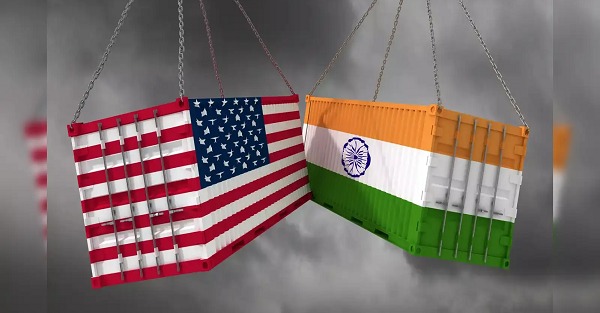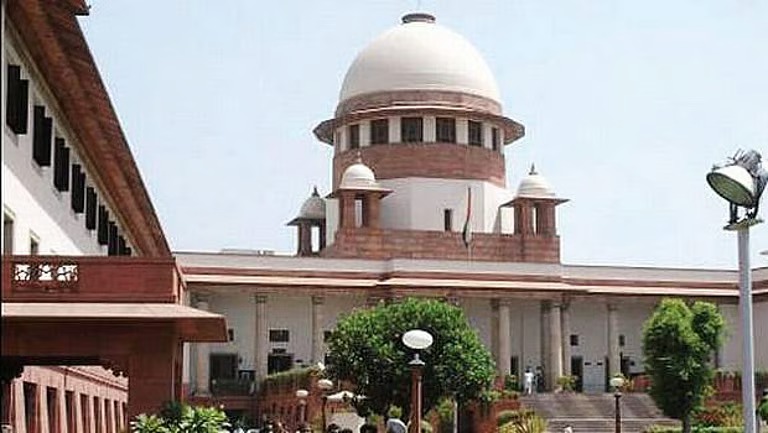S.U. Khan, J.@mdashHeard learned Counsel for the parties.
2. This writ petition is directed against order dated 16.12.2002 passed by Additional District Magistrate (F and R) Agra in Case No. 149 of 2002 Amir Bux v. Manju Tomar, under Stamp Act. Sale deed dated 5.10.2001 was impounded. Through the said order it was determined that through the sale deed an area of 1 bigha 1 biswa (equivalent to 2419 square meters) agricultural land was sold while in the area in, question the rate of abadi land was Rs. 1,100 per square meter. In the sale deed valuation of the property was shown to be Rs. 8 Lakhs. By the impugned order valuation was determined to be Rs. 26,60,900 and it was held that petitioner was liable to pay Rs. 1,86,100 as deficiency in stamp duty. Additional amount of Rs. 55,830 u/s 40B 40(1B)] of the Stamp Act and Rs. 1 Lakh as penalty was also required to be paid. In this manner petitioner was required to pay Rs. 3,41,930. Against the said order Revision No. 575 was filed. Commissioner, Agra Division, Agra allowed the revision in part and set-aside the penalty, in other respects order of A.D.M. was approved and it was also directed that 2% per month interest must also be paid. Said order has also been challenged through this writ petition.
3. Even though the area of the agricultural land sold was more than 1 bigha (pucca) still it was held to be abadi. In circle rates normally the minimum area is prescribed for treating the agricultural land to be agricultural. In the Impugned order it is not mentioned that for the relevant period in the circle rate what minimum area was prescribed for treating agricultural land to be agricultural. It has further been mentioned in the Impugned orders that for the area in question in the circle rates no rate is prescribed for agricultural land hence it will have to be treated as abadi. Petitioner has filed kliasra to show that agriculture was being carried out in the land in question comprised in plot No. 824. The property is situate in Mauza Sikandara Vahistabad district Azamgarh.
4. I have held in
5. In normal course matter would have required remand. However, at the time of argument learned Counsel for the petitioner categorically agreed that in case this Court felt inclined to decide the matter finally then petitioner was ready to pay additional amount of Rs. 62,000 over and above the stamp duty paid by him (recorded in the order sheet on 22.8.2007). In my opinion, it would be in the interest of justice to conclude the matter finally by directing the petitioner to pay Rs. 62,000 (1/3 of the stamp deficiency determined by the impugned orders) more in respect of deed in question. This is being done particularly in view of the fact that absolutely no effort has been made by the A.D.M to determine the market value of the land in dispute on the basis of the general principles meant for the said purpose.
6. Accordingly petitioner is directed to deposit the aforesaid amount of Rs. 62,000 within three months from today positively. Apart from the aforesaid amount of Rs. 62,000 petitioner shall not be liable to pay any other amount for the deed in question. However, if petitioner has already deposited more than Rs. 62,000 then rest of the amount shall be returned to the petitioner within three months falling which 1% per month interest shall be payable thereupon since after three months till actual payment.
7. Writ petition is accordingly disposed of.
8. Before parting with the case it is essential to put a note of caution. The Court is constantly finding that the manner in which stamp authorities are deciding the cases of deficiency in stamp duty is wholly unsatisfactory. In several cases learned Counsel for the petitioners have stated that every concerned authority particularly Sub-Registrars are being given particular targets for recovery of stamp deficiency and penalty etc. per year. If this allegation is correct then it is highly deplorable. In order to achieve the targets, Sub-Registrars and other authorities may be compelled to unnecessarily dig up the cases and initiate and finalise proceedings for recovery of deficiency in stamp duty. Charging reasonable stamp duty is the right of State. However, in certain cases it is found that virtually vendors and vendees are being compelled to pay a sort of fine. Selling and purchasing immovable property is not a crime. In certain cases the Court has found that the manner of determining the deficiency and penalty and its quantum is in the nature of fine imposed for a crime.
9. By virtue of Section 47A(1) of the Stamp Act, as it stood at the relevant time (October, 2001), after its amendment by U.P. Act No. 22 of 1998, the first and foremost duty of Sub-Registrar was to determine the market value and consequent stamp duty payable before registration of the sale deed. In this regard position remains substantially the same under present Section 47A(1)(a) as added by U.P. Act No. 38 of 2001 published in the Gazette on 15.11.2001. The two provisions are quoted below:
Section 47A(1) as it stood at the relevant time:
47A(1) Undervaluation of the instrument.--(1) If the market value of any property which is the subject of any instrument, on which duty is chargeable on market value of such property, as set forth in such instrument, is less than even the minimum value determined in accordance with the rules made under this Act, the registering officer appointed under the Registration Act, 1908 shall, before registering the instrument, refer the same to the Collector for determination of the market value of such property and the proper duty payable thereon.
Present Section 47A(1)(a):
47A(1)(a) If the market value of any property, which is the subject of any instrument, on which duty is chargeable on market value of the property as set forth in such instrument is less than even the minimum value determined in accordance with the rules made under this Act, the registering officer appointed under the Registration Act, 1908, shall, notwithstanding anything contained in the said Act, immediately after presentation of such instrument, and before accepting It for registration and taking any action u/s 52 of the said Act, require the person liable to pay stamp duty u/s 29, to pay the deficit stamp duty as computed on the basis of the minimum value determined in accordance with the said rules and return the instrument for presenting again in accordance with Section 23 of the Registration Act, 1908.
10. Accordingly if Sub-Registrar is of the opinion that proper stamp has not been paid then he is required to refer the matter to the Collector before registration, [of course in some exceptional cases impounding may be done even after registration (Section 47A(3)]. In every sale deed the area where property sought to be sold is situated is in mentioned. Every Sub-Registrar has got copy of the circle rates prepared under the U.P. Stamp (Valuation of Property) Rules, 1997. If by reading the sale deed and circle rates it appears that the stamp duty paid is insufficient then matter shall be referred before registration. However, in several cases like the present one first sale deed is registered and then after few days or weeks or months same Sub-Registrar (or his successor) sends the reference suggesting that correct stamp duty payable has not been paid. In most of the cases such opinion is formed and reference is accordingly made merely on the basis of sale deed and circle rates. If by reading the sale deed and circle rates, it is clear that insufficient stamp had been paid then, Sub-Registrar is required to explain as to why at the initial stage he registered the sale deed. The only possible inference which may be drawn in such cases is that at the initial stage Sub-Registrar registered the sale deed for extraneous consideration and thereafter in order to complete the target given to him he has referred the matter giving his opinion that insufficient stamp duty has been paid.
11. Such types of cases are coming before the Court with alarming repetition. In some future case, the Court may be constrained to direct the Collectors of all the districts to analyse all the references made by the Sub-Registrars within last one or two years and to suspend all those Sub-Registrars who in the first instance registered the sale deed and thereafter made reference merely on the basis of recital in the sale deed and circle rates and for initiation of disciplinary proceeding against them.
12. The State may reconsider the desirability of the policy fixing quota/ target in the matter of stamp duty, if such a quota is being fixed by the State.
13. Learned standing counsel is directed to send a copy of this judgment to the Secretary concerned and to the Collectors of all the districts of U.P.
14. Office is directed to supply copy of this judgment free of cost to Sri N.P. Pandey, learned standing counsel within a week.

